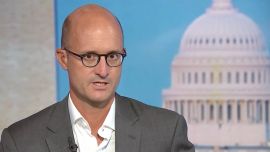Latin America’s leftist leaders hailed the December election of Gabriel Boric in Chile while investors pulled back, leading the country’s currency and stock market to fall. Yet Boric has the chance to surprise both sides, carving out a different left-leaning political path. Rather than selling the economic populism of Argentina or Brazil or the authoritarian dogma of Venezuela, Cuba or Nicaragua, Boric could create a more progressive country and inclusive welfare state. Shedding Chile’s neoliberal economic model for a social democratic one would put it on the trajectory of other high-income countries, benefiting Chile’s citizens, making growth more stable and sustainable and creating a new paradigm for its neighbours to follow.
Chile has been on the economic rise since its return to democracy in 1989. Three decades of market-friendly neoliberal policies, including privatising public works, lowering trade barriers and deregulating capital markets, spurred foreign and domestic investment and economic growth. This model boosted per capita incomes from less than US$2,300 in 1989 to more than US$15,000 today, (and US$25,000 when measured by purchasing power parity or PPP), making Chile one of the few Latin American nations to graduate from middle to high income in the World Bank’s rankings.
So why did a record number of Chileans nonetheless turn out to vote for a candidate who promised to “bury” neoliberalism? Because as Chile grew richer, it didn’t become more generous. Social spending since 1990 has remained around 10 percent of gross domestic product, roughly half the 38-country Organisation for Economic Cooperation and Development average. Worse, the structure of many public programmes created a tiered system providing different and often better service to the middle and upper classes.
Take education. To start, Chile just doesn’t spend enough per kid, ranking far behind most of its OECD peers. Its voucher system theoretically allows parents and students to choose any school. But schools are clustered in wealthy neighbourhoods, creating geographic barriers for the less advantaged. Many private schools take the vouchers but also charge additional fees, leaving them out of financial reach. And a lack of teacher training and consistent curricula leads to uneven and low-quality instruction, particularly in less affluent public schools which have less leeway in hiring and firing instructors. The setup puts poorer kids at a disadvantage.
Chile’s healthcare suffers similar problems of unequal access and care. Spending overall is minimal, a third less than the OECD average. And though Chile legally offers universal health care, the reality is that those with money get better treatment. The upper crust funnels its mandatory payroll taxes into a better-resourced private system, while the bottom two-thirds of Chileans pay into a public system. As happens in education, the siphoning off of the wealthier and healthier to private providers leaves the state with fewer resources for the needier and sicker.
Chile’s vaunted private pension system also fails its elderly. It expanded and deepened the nation’s capital markets to be sure, as Chile’s pension funds manage more than US$200 million, roughly 10 percent of GDP. But it has failed to provide “social security.” Eighty percent of retirees don’t save enough to stave off penury. The problem is structural: Individual accounts spread temporal risk across a person’s lifetime; they do not pool risk across society. Without any redistribution, minimum wage workers will never be able to build up enough savings to support an adequate retirement (never mind the high fees charged especially in the early years of the system, which made AFP private pension fund managers the most profitable arm of the nation’s financial industry).
European nations, the United States, Japan and other now high-income market democracies created and expanded their welfare states long before they reached the per capita income levels Chile enjoys today. Then-US president Franklin Delano Roosevelt introduced Social Security and unemployment insurance when average US incomes were just over US$1,000 (less than 10,000 in today’s dollars), and not all that much more in real terms when Lyndon B. Johnson introduced Medicare in 1965. Post-World War II Europe greatly expanded public healthcare, pensions, disability and other worker compensation throughout the late 1940s and 1950s when per capita incomes were less than US$10,000 as well. As Japan climbed the socioeconomic ladder, it vastly expanded public social programmes. During the 1970s, when Japan’s per capita GDP was far lower than Chile’s today, it doubled social spending as a percentage of GDP. These outlays boosted worker productivity (fewer among the economically active population were kept out of the workforce caring for the old, young, or infirm) and increased political stability, nurturing longer term and more sustainable economic growth.
Chile’s neoliberal model helped the nation climb the socioeconomic ladder. But as the 2019 protests and the 2021 election results reveal, that model can’t keep it up there. The unmitigated economic disparities leave the nation too politically fragile to maintain economic stability and growth. Even the International Monetary Fund now believes that government spending crowds in, not out, private investment, favouring a bigger rather than smaller state.
Of course, if the Boric government or constituent assembly prove to be more socialist than social democratic, the naysayers will have a point. But so far, he has shown no love for the region’s authoritarian left, criticising Nicaragua, Cuba and Venezuela. And his economic proposals look to provide Chileans with the government services and supports that citizens in other high-income countries have long demanded and received.
For Chile to thrive again, it needs to change its thinking and, more importantly, its public spending. A minimal state will no longer bring longer-term stability for investors, businesses or its people. Chile has successfully graduated to high income. Its policies need to catch up. And if Boric succeeds and they do, Chile’s new president will have created a new model for Latin America’s left, one based on both economic and political inclusion that creates stronger economies and democracies throughout the region.
related news
by Shannon K O'Neil, Bloomberg























Comments